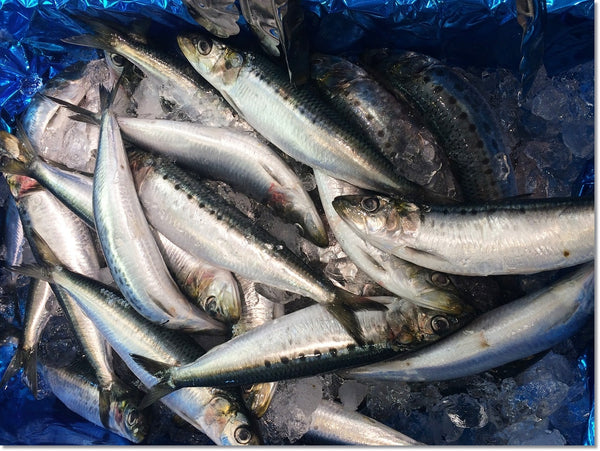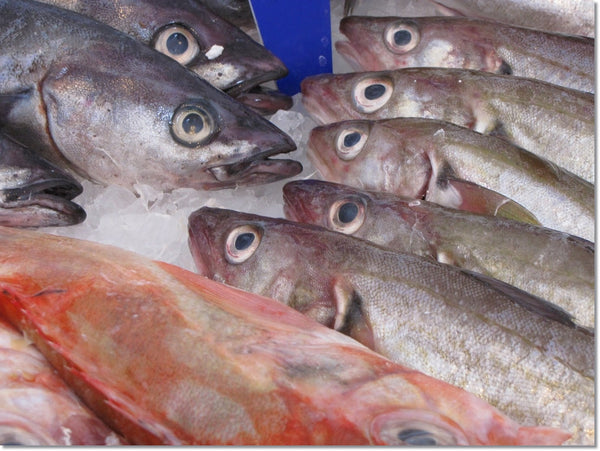Food & Recipes
What Are Sustainable Seafood?

When you choose to buy sustainable seafood, you support the conscientious stewardship of natural resources including marine resources.
When you make sustainable seafood choices, you elect to help the environment. You choose a solution that ensures healthier and cleaner oceans. Whether you are a personal cook, a professional chef, a parent, an individual shopper, or a seafood supplier, your choice matters.
What is Sustainable Seafood?
Wikipedia defines it as:
“Seafood that is either caught or farmed in ways that consider the long-term vitality of harvested species and the well-being of the oceans, as well as the livelihoods of fisheries-dependent communities.”
It is seafood that has been fished using methods that can help maintain or increase fish production in the long run. They’ve been caught using means that won’t jeopardize marine life. So, how do you know which seafood is sustainable?
Seafood Watch has developed criteria which help illustrate the qualities of sustainable fisheries:
- Low likelihood of being overfished
- Abundance in number sufficient to maintain long-term production
- Caught or farmed using techniques that decrease the risk of catching unmarketable sea life
- Caught using fishing techniques that maintain or preserve diversity or productivity of marine ecosystem
- Caught in a way that won’t pose as a substantial risk to fish stocks through escape or transmission of parasites or diseases
- Fished using methods that will discourage organic waste and toxic discharge
- Caught while observing local, national, and international laws that favor marine life conservation
Top Sustainable Fish or Seafood to Buy
Overfishing is a legitimate concern. 90% of the world’s fisheries have been exploited. Recently, you’ve probably heard the news that the Great Barrier Reef is under severe stress. People who rely on fishing for their livelihood are seeing the effects of overfishing. Our oceans are doomed in the absence of corals and natural fish population.
Fortunately, we can still help our marine life. Education and regulation are the keys to restoring damages created by overfishing. It is important that cooks, foodies, restaurant owners, chefs, and other food professionals choose sustainable seafood. It is quite simple really: Sustainability means not taking more than what can be replenished. Do not take more than what our marine life can give.
So, what are the best types of sustainable seafood?
1. Farmed shellfish

Farmed clams, mussels, and oysters are the best kinds for the marine ecosystem. They are the most sustainable type of seafood. They create a positive impact on the environment as a whole. They help filter the water, and these farm sites also provide nurseries for juvenile shellfish. Needless to say, the next time you find yourself invited to oyster happy hour – Go! Give yourself a generous helping of oysters.
Farmed fish is not at all that bad either. Unfortunately, farmed seafood is likely going to be a primary source of food in the considerable future. Yes, there are fish farming methods that are frowned upon. Some practices are harmful to the environment. Still, many farming methods are preferable than actual fishing. Scallop dredging or tonging for wild oysters are heavily discouraged.
2. Sablefish or Black Cod
Sablefish is a deep-sea fish that is sustainable especially if it’s from Canadian Pacific or Alaska. This type of fish can live up to 113 years. This sleek fish is usually found in the deep waters of the North Pacific.
Sablefishes are remarkably sensitive. They need strict management. Sustainable ones are often trapped and caught using longlines. However, be wary of those that are not sustainable like those trawl-caught in California, Oregon, and Washington.
These fishes have rich buttery flavor, so it is not surprising that they’re considered a delicacy of chefs and cooks. Sablefish is often smoked before it's sold, but it’s available all year round because of its huge demand.
3. Spot Prawns
Wild spot prawns are known for their firm texture and sweet flavor. They’re known for the white spots on their tail, white horizontal lines on their shell, and reddish brown color which usually turns pink once they’re cooked.
They’re usually available from May until mid-July. However, you’ll find frozen spot prawns all year round. When you buy spot prawns, make sure that they have a firm texture and do not smell like ammonia. Prawns with no or fewer black spots are the best choices. Sustainable spot prawns are often caught using a trap in the Canadian Pacific. Avoid buying prawns that are caught in the United States.
4. Sardines

Sardines often move in large schools. These fishes are filter feeders. They swim with open mouths while collecting plankton. Sardines are available fresh during late summer. However, there are canned, frozen, and smoked sardines available all-year round. When shopping for sustainable sardines, look for sardines from Canada and US Pacific. Make sure to avoid sardines from Atlantic US.
5. Albacore Tuna
This type of tuna is usually caught at a young age in the Pacific Ocean. They travel in large schools. Make sure to look for tuna caught by troll or pole from Canada and US Pacific waters. Avoid those that were caught by longline.
6. Closed Containment Farmed Salmon

Farmed salmon has received negative press over the years. With the emergence of a sustainable closed farming, the issues arising from open net cage farming have been eliminated or minimized. Look for fishes that were raised in closed cage farming. Avoid salmon raised in open pens.
7. Swordfish – Harpoon

The swordfish with its ‘sword’ is a wonder. This fish, with its sword and smooth body, passes through schools of prey quickly. The method used to catch this fish is often harmful to other marine life like turtles and sharks. When buying swordfish, make sure to ask for harpoon and hand line caught swordfish.
Choosing sustainable seafood is crucial for the health of the planet’s ecosystem and the environment. So, protect our oceans by eating sustainably.

